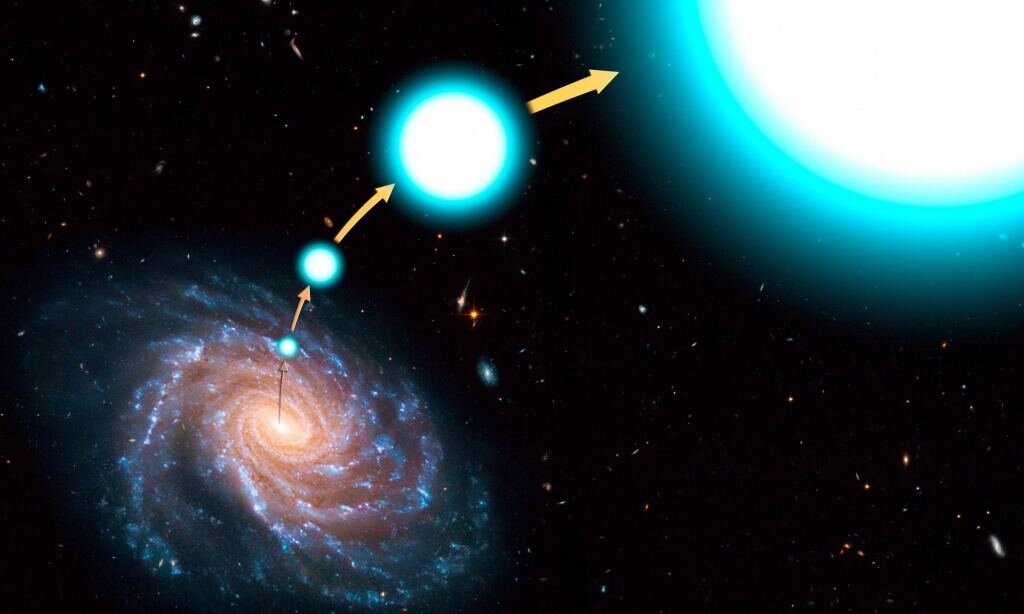Astronomers have found six new stars which speed allows them to fly out of the Milky Way. They were formed during Type Ia supernova explosions. One of the luminaries is the fastest known to people.

The fastest star in the Galaxy
The new study, which uses data from the Gaia Space Telescope, contains information about six new stars that are so fast that they can leave our Galaxy. Previously, scientists knew only ten such luminaries.
Just as the orbit of a planet in the solar system is determined by its velocity relative to the Sun, so the orbit of a star in the Milky Way is determined by the velocity relative to its center. If it exceeds 550 km/s at the distance at which the Sun is located from it, then the gravitational field will simply not hold the star.
However, it is extremely difficult for stars to achieve such a speed. That is why the indicators of two newly discovered luminaries look so fantastic: 1,694 km/s and 2,285 km/s. The second of them is called J0927 and is now the fastest in the Milky Way.
Separately, scientists note that stars that rotate in the immediate vicinity of the black hole in the center of our Galaxy at certain moments can have even greater speed. However, they are so close to the Sagittarius A* gravity well that they will not be able to escape from it.
Unusual supernova explosions
Separately, scientists examined the reasons that cause stars to move so fast. Only one mechanism is generally recognized now — the explosion of a Type Ia supernova. They occur in systems of two white dwarfs that are close to each other. In this case, matter flows from a smaller star to a larger one.
It continues until the mass of the “recipient” exceeds the “Chandrasekhar limit”, at which the white dwarf should turn into a neutron star. At this moment, it flares up like a supernova and a powerful explosion throws its companion into space at high speed.
However, there is a small problem with all this. There are more Type Ia supernovae observed than there should be binary white dwarfs in the universe. Therefore, scientists have considered an alternative possibility in which the companion of a white dwarf is just a fairly old and hot star. In this case, everything happens about the same way.
The only difference is that the white dwarf does not have time to reach the Chandrasekhar limit. The helium that it “steals” from a neighboring star explodes on its surface and the blast wave “ignites” the carbon core. In this case, the second star is ejected at the speed that it has when moving in orbit, and in the case of close systems it can be hundreds or thousands of kilometers per second.
According to phys.org
Follow us on Twitter to get the most interesting space news in time
https://twitter.com/ust_magazine
